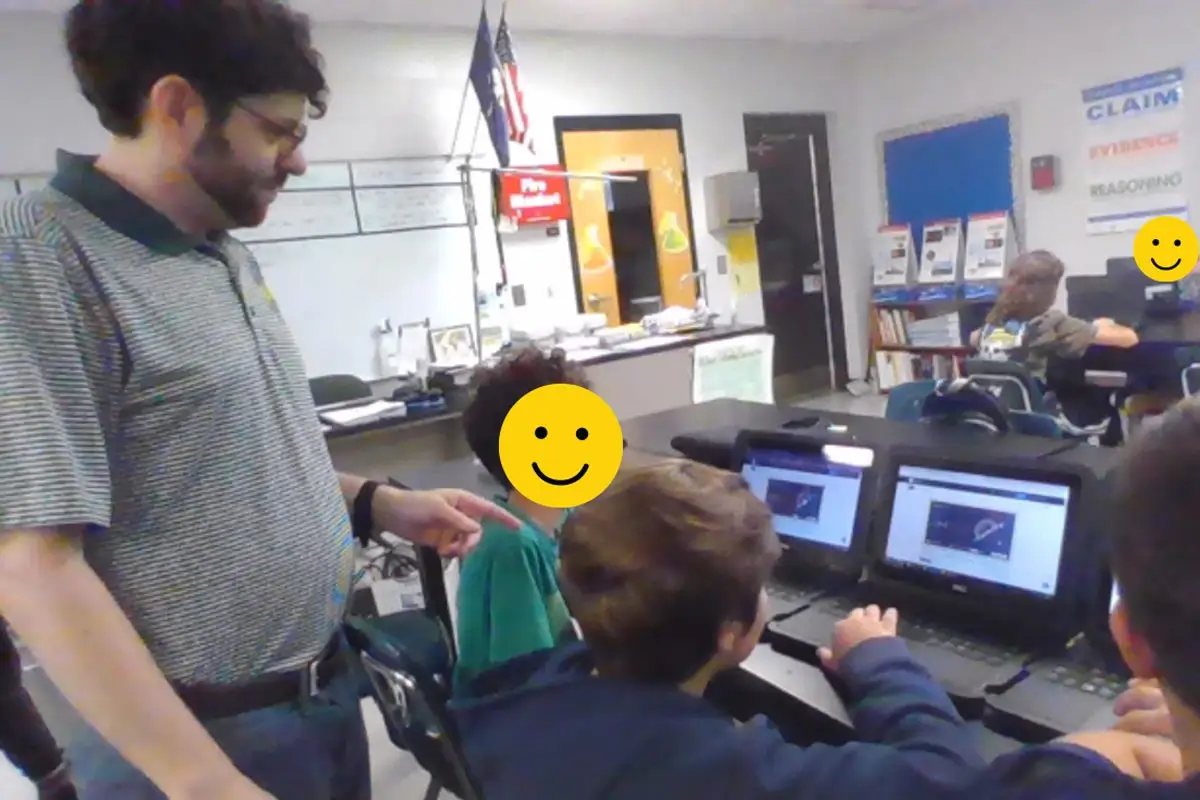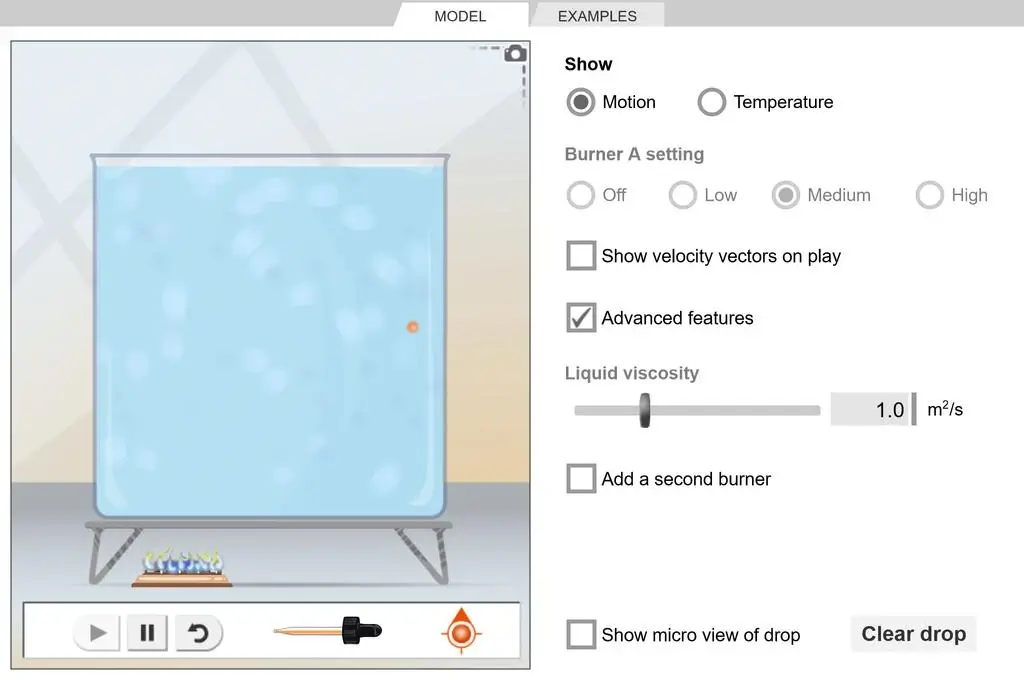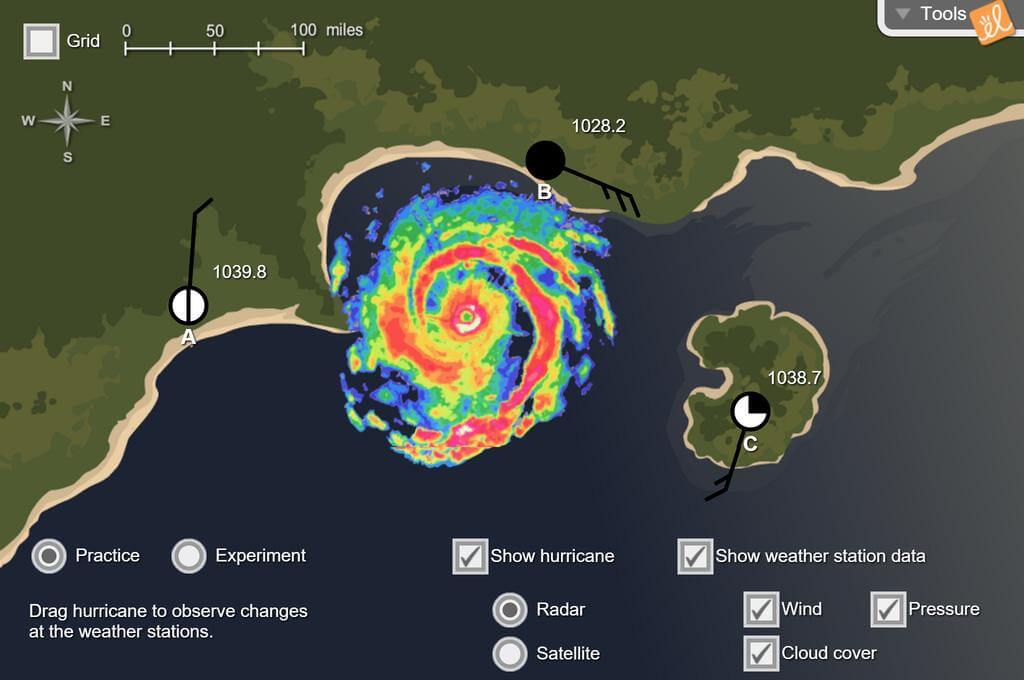
Dr. Scott Sutherland, a lead teacher for the Aiken County Public School District at New Ellenton Middle STEAM Magnet School in New Ellenton, SC, brings a love of learning into his classroom. “One of my goals as a teacher is to ensure that students are equipped with both the knowledge and skills in order to be well prepared for high-demand jobs and careers that will be available to them when they graduate,” said Dr. Sutherland.
As a 6th- and 7th-grade science teacher, Dr. Sutherland continued his thirst for knowledge, earning certifications and endorsements in Gifted and Talented, Online Teaching, Literacy, 4.0 Teacher Evaluator, and Project Based Learning, just to name a few. He received a Master of Education in 2016 and a Doctor of Education in Curriculum and Instruction in 2022 from the University of South Carolina.
Exploring the impact of interactive simulations on ELL students
Dr. Sutherland used ExploreLearning Gizmos as a research tool for his doctoral dissertation. His study aimed to determine how Gizmos would impact English Language Learner (ELLs), also known as Multilingual Learner (MLLs), students in demonstrating their verbal and written comprehension of science content at a proficient level. “Students were picking up with social language pretty well, but academic language had been a big concern with them,” he said. While he used visuals, graphics, and manipulatives in class as strategies to support English Language Learners, Dr. Sutherland said, “I really wanted to take a look at how we could go the extra step and find something that was a visual that they could truly interact with in a meaningful way to be able to build comprehension. That’s why I started working with the Gizmos program.”

Students use the Laser Reflection Gizmo with Dr. Sutherland.
In addition to finding an avenue for his ELL (or Multilingual language) students to grasp academic vocabulary, Dr. Sutherland was interested in looking at ways additional stakeholders could benefit from his research with Gizmos, such as teachers and curriculum writers within his school district and state. The role of technology was also a focus. “I work at a school with 1:1, but in order to use Gizmos adequately, we had to really build equity into our program for technology.”
Participants of his study included three sixth-grade students in three different general education science classes. According to their WIDA Access test scores, the twelve-year-old students were classified as having limited English proficiency, or LEP. The primary language of two participants was Spanish, while the other one was Mandarin Chinese.
Dr. Sutherland identified two research questions for his study: How does the use of digital STEM simulations provide opportunities for English Language Learners, or Multilingual Learners, to develop understanding of content-specific vocabulary in middle school science? And what impact, if any, does a digital simulation game have on ELL learner ability to understand science at a proficient level (on a level with their peers of similar age/grade)? Proficiency was based on the learning objective outlined at the beginning of each Gizmo.
| Research Question: How does the use of digital simulations provide opportunities for English Language Learners to develop understanding of content-specific vocabulary in middle school science? (Theme 1) | |
|---|---|
| Supportive Data 1 | Student 1 and Student 2 correctly applied the content specific vocabulary term dense when discussing how liquids and gases rise or sink due their density. Both also communicated that density was higher at a colder location. |
| Supportive Data 2 | Student 2 and student 3 correctly applied the content specific vocabulary word air pressure when starting that the air pressure decreased whenever a hurricane was near and further elaborated that all hurricanes seemed to need low pressure. |
| Supportive Data 3 | Student 2 and student 3 correctly applied the content specific vocabulary word equator when stating that air heats up and rises at the equator. Student 1 correctly stated that water is less dense at the equator and going upward. |
I conclude that interactive Gizmos simulations increase verbal and written comprehension of science content with middle level English Language Learner students.
| Research Question: What impact, if any, does a digital simulation game have on ELL learner ability to understand science at a proficient level (on a level with their peers of similar age/grade)? (Theme 2) | |
|---|---|
| Supportive Data 1 | All three students’ responses indicated their comprehension that warmed fluids rise and cooled fluids sink during the process of convection. |
| Supportive Data 2 | All three students were observed using the Gizmo to correctly state the air pressure decreased when a hurricane was nearby. |
| Supportive Data 3 | Student 1 and 2 answers indicated an understanding that the warm and cooled fluids had a different density. |
| Supportive Data 4 | Student 2 and 3 answers indicated an understanding that hurricanes weaken when they reach land due to losing access to their energy source. |
I conclude that digital simulation games have a positive affect on ELL learner ability to understand science at a proficient level due to the visual connections that they provide that maximize comprehensible input.
Utilizing Gizmos to improve learning strategies for ELL students
How did Dr. Sutherland choose the Gizmos with over 550 options for his study? Two Gizmos, Convection Cells and Hurricane Motion, related to the curriculum at that point in the year. “More importantly, they fit in with our Weather and Climate standard, which over the past decade has been the number one area that students have struggled most in. Not just ELL students, but all students across our school district,” he said.

Convection Cells Gizmo

Hurricane Motion Gizmo
Teachers give input in many ways, but is it always comprehensible to ELL students? Dr. Sutherland wondered if those students understand concepts and vocabulary without losing meaning due to language barriers. “The visual nature of simulations was proposed to help reduce the language barrier between connecting prior knowledge to new learning by allowing the student first to comprehend the concept in their own way,” said Dr. Sutherland. While it may have seemed like a backward approach to vocabulary acquisition, “Those students could actually demonstrate their comprehension in their own way,” he said. “This approach really helped to motivate the English Language Learners that I worked with using this Gizmos program.”
Elevating Learning for All: The Ongoing Impact of Gizmos' Interactive Simulations in Dr. Sutherland's Classroom
Dr. Sutherland noted a strong correlation between the use of Gizmos and English Language Learners’ written and oral comprehension of science content, evident through answers on lab sheets and in interviews. The language barriers were reduced using Gizmos because the students could access more interactive visuals instead of reading complex text when learning about new content. “I concluded that Gizmos had a positive effect on English Language Learners' ability to understand science at proficient levels due to the visual connections that they provide that maximize what’s considered comprehensible input,” he said.
Dr. Sutherland continues to use Gizmos in his classroom because of the impact of interactive simulations. “I would recommend using Gizmos on a consistent basis to promote a technical understanding of how the program works, as well as to facilitate and guide students through several to ensure they know how to navigate the program,” he said.
With a wide variety of interactive simulations available, Dr. Sutherland plans to include Gizmos into all of the standards for significant effects with his classes. “It is a marvelous tool that can really help to differentiate the learning not only for ELL, but part of my action plan is even going further with benefits to other groups of students, such as those that are struggling readers.”
Find out more details about Dr. Sutherland’s study in his dissertation, “The Impact of an Interactive Simulation Program on English Language Learner Achievement in a Middle School Science Classroom.”


Are you looking for strategies to improve learning for ELL (MLL) students and every other student in your class? Look no further than Gizmos. Take advantage of a free trial today.
Take a Trial